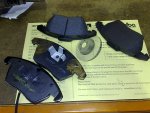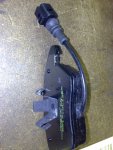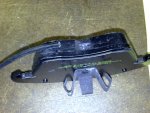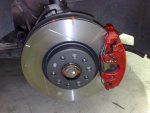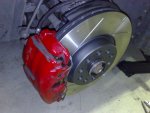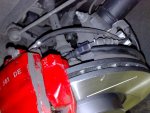gmc
Ready to race!
- Location
- Sydney, Australia
- Car(s)
- MK7 2014 Golf R
Here are pics of the DBA 4000 series rotors and Hawk Ceramic pads fitted.
Fitment took approximately 20mins a side. The only special tool needed was a torx bit to remove and refit the rotor retaining bolt that secures it to the hub while the wheel is off.
The Hawk pads come with pad wear sensors on both sides. Because the GTI has a sensor only on the passenger side, I cut off the cable for the driver's side pad to keep it nice and tidy.
The new stock rotors and pads were removed 2 days after they were fitted and bedded in by the local VW dealer, so this was a really good back to back test. Due to the hardness of the pads, they needed around 200kms of driving to really bed in 100%. The initial bite and feel is on par with the OEM setup, but the moderate to heavy braking, especially from higher freeway speeds is a big improvement on stock.
Fitment took approximately 20mins a side. The only special tool needed was a torx bit to remove and refit the rotor retaining bolt that secures it to the hub while the wheel is off.
The Hawk pads come with pad wear sensors on both sides. Because the GTI has a sensor only on the passenger side, I cut off the cable for the driver's side pad to keep it nice and tidy.
The new stock rotors and pads were removed 2 days after they were fitted and bedded in by the local VW dealer, so this was a really good back to back test. Due to the hardness of the pads, they needed around 200kms of driving to really bed in 100%. The initial bite and feel is on par with the OEM setup, but the moderate to heavy braking, especially from higher freeway speeds is a big improvement on stock.
Attachments
Last edited:
